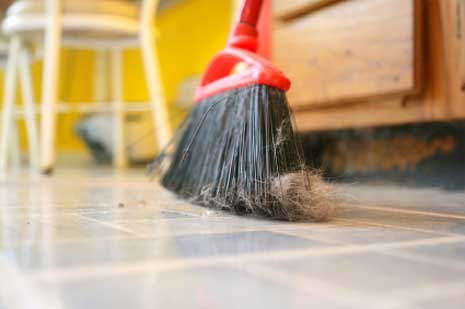
Allergies and Asthma? Be Careful when Burning Scented Candles
Candles are the most popular mood-makers. In particular, scented candles are very popular. They provide an “individual smell” in shops, at events, in restaurants and in homes. However, lung doctors warn against using scented candles, especially if they are made of paraffin. Paraffin candles are made from petroleum, which is produced from oil. Slags are often used by the oil industry for the manufacturing of candles. This allows the production cost of the candles to be kept to a minimum, ensuring a larger profit margin for manufacturers and retailers. Alternatively, lung doctors recommend candles from beeswax or soy instead, and advise consumers to refrain from scented candles and other scented air products altogether. (1) The Medical Association of the German Allergists speak out and are critical of fragrances. (2)
Scented Candles – A Problem for Allergy and Asthma Suffers
Pulmonary doctors of the German Lung Foundation (DLS) consider the use of scented candles made from paraffin as a concern for allergy sufferers and asthmatics. When the burning materials are released, they may cause or exacerbate the respiratory symptoms. Even people with perfume allergies are at risk. Skin reactions may be exacerbated by the burning of scented candles. Those with perfume allergies are therefore advised to abandon all scented candles.
Which is of Greater Concern…Natural Fragrance or Chemicals?
It is often stated, it was “only” a natural fragrance. The consumer often makes purchases with this promise of a false sense of security. Whether natural fragrances are a better choice than chemical fragrances is answered by Professor Thomas Fuchs, an allergist with the Department of Dermatology with the University of Medicine at Goettigen, November 2010 in the Rheinische Post: “… in the end fragrances are fragrances, whether they are natural or produced in the laboratory.”
Should those with a fragrance allergy use any fragrances at all? Professor Fox, who belongs to the Association of German Allergists, makes his position on this matter clear: “Those who are affected by a fragrance allergy should also do without all fragrances as much as possible.”
Fragrances Can Trigger Asthma Attacks
Scented candles are very problematic for asthma sufferers. It is reported that some asthmatics must resort more often to using asthma inhalers. Extreme caution must be used to leave locations where scented candles are being burned.
Paraffin Candles Emit Pollutants
“Paraffin candles are made from petroleum,” said Professor Harald Morr, CEO, on the website of the German Lung doctors. “Especially people, who have already developed a contact allergy to certain perfumes, risk the increase from the burning of substances released to the skin or allergic symptoms in the airways. This can cause skin rashes and asthma symptoms.”
Concern for the burning of candles is not just for asthma or allergy sufferers alone, but also for anyone who is in a room where candles are burning. It is recommended by pulmonary doctors from the German Lung Foundation to be cautious and have good ventilation, especially in small rooms or in places with poor ventilation. In addition, they even advise, to set up fans to get rid of the pollutants faster which are released by the candles. Is this advice over the top? Surely not, because especially if several candles are burning at the same time, this can quickly lead to significant pollution in indoor environments. Not only is the paraffin of concern, but also the wicks, which are very often contain lead. The U.S. Environmental Protection Agency published that the proven lead exposure in children was caused to a considerable extent by the burning of candles. (3)
Candle Magic to Create Atmosphere
Those who are concerned about health should refrain from scented candles and instead use candles from plant based sources, soy and beeswax instead of those made from paraffin.
In addition, beeswax candles should be organic. Conventional beeswax is contaminated by pesticides and drug residues which can be expected to be released during burning into the air.
Mood candles in the living room should be limited to special occasions and should be selected for their pollution-free quality. After the use of each candle it is important to thoroughly air out the room, and make sure that candles are “suffocated” completely.
Author: Silvia K. Müller, CSN – Chemical Sensitivity Network
Literature:
1. Lungenärzte im Netz, Paraffin in Duftkerzen kann die Atemwege reizen und Asthma hervorrufen, 15.11.2010
2. RP, Experte rät zu Verzicht auf Parfüm, 24.11.2010
3. Silvia K. Müller, Vorsicht bei MCS: Kerzen können zu Schadstoffbelastung in Innenräumen beitragen, CSN, 13.12.2008
 Many dining room tables and kitchen and terrace tables are made of untreated wood. Its unique appeal reflects the “country style” or “bohemian” trends again.
Many dining room tables and kitchen and terrace tables are made of untreated wood. Its unique appeal reflects the “country style” or “bohemian” trends again.




